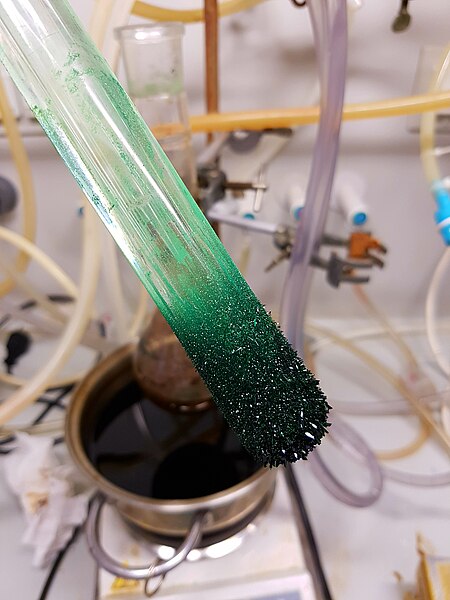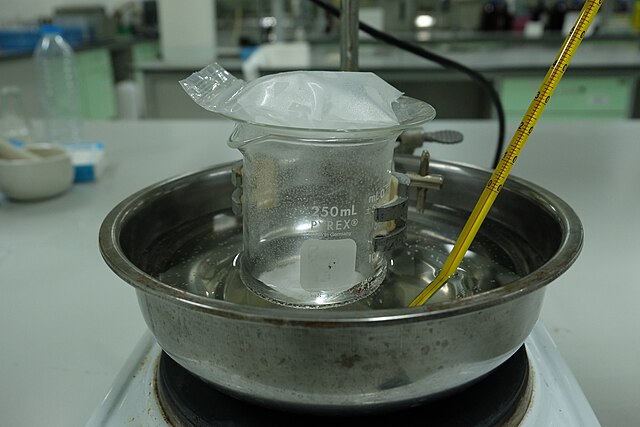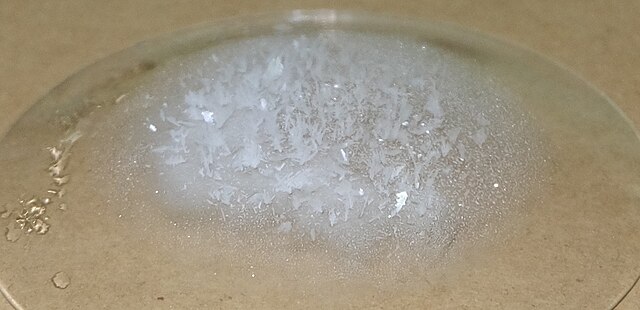Dry ice colloquially means the solid form of carbon dioxide. It is commonly used for temporary refrigeration as CO2 does not have a liquid state at normal atmospheric pressure and sublimes directly from the solid state to the gas state. It is used primarily as a cooling agent, but is also used in fog machines at theatres for dramatic effects. Its advantages include lower temperature than that of water ice and not leaving any residue (other than incidental frost from moisture in the atmosphere). It is useful for preserving frozen foods (such as ice cream) where mechanical cooling is unavailable.
Subliming dry ice pellet, with white frost on the surface
An ice cream cart
Sublimation
Dry ice in water
Sublimation (phase transition)
Sublimation is the transition of a substance directly from the solid to the gas state, without passing through the liquid state. The verb form of sublimation is sublime, or less preferably, sublimate. Sublimate also refers to the product obtained by sublimation. The point at which sublimation occurs rapidly is called critical sublimation point, or simply sublimation point. Notable examples include sublimation of dry ice at room temperature and atmospheric pressure, and that of solid iodine with heating.
Dark green crystals of nickelocene, sublimed and freshly deposited on a cold finger
Dry ice subliming in air
Experimental set up for the sublimation reaction of naphthalene Solid naphthalene sublimes and form the crystal-like structure at the bottom of the watch glass
Solid compound of naphthalene sublimed to form a crystal-like structure on the cool surface.








